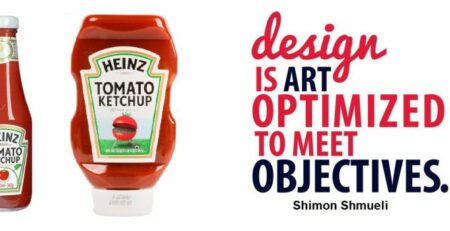Revolutionize Your Branding: The Ultimate Guide to Unique Logo Designs
Logo design is not just about creating a visual identity; it’s about crafting a symbol that encapsulates the essence of a brand, its values, and its unique position in the marketplace. A well-designed logo can elevate a brand, providing it with a distinctive presence that resonates deeply with consumers. In today’s competitive business environment, where countless brands vie for attention, having a unique logo is more crucial than ever.
Understanding the fundamentals of logo design is the first step towards creating a visual mark that is not only memorable but also effective in communicating a brand’s message. This involves an appreciation of color theory, typography, and the psychology of shapes, each playing a pivotal role in how a logo influences perception and decision-making among potential customers.
Moreover, the process of designing a logo must be approached with a strategic mindset. It’s not merely about aesthetics; it’s about aligning the design with the brand’s strategic goals. This strategic alignment is essential for ensuring that the logo not only looks good but also works hard to achieve business objectives, such as increasing brand recognition and building customer loyalty.
Technological advancements have also transformed the landscape of logo design. With tools and software becoming more sophisticated, designers can now experiment with more complex and intricate designs. However, the core principles of simplicity and clarity remain paramount, as a logo must be scalable and effective across various mediums, from tiny mobile screens to large billboards.
Innovation in logo design also involves embracing new trends while maintaining a timeless quality that prevents the logo from becoming quickly outdated. This delicate balance requires a deep understanding of current design trends and an ability to forecast which elements have the longevity to represent a brand effectively over time.
Furthermore, the rise of digital media has emphasized the importance of adaptable and flexible logo designs. A modern logo must be dynamic, capable of evolving along with the brand and its digital presence. This might mean creating multiple versions of a logo to suit different platforms or contexts, ensuring consistency and coherence in brand messaging across all touchpoints.
Collaboration between designers and brands is crucial for crafting a successful logo. Engaging a creative staffing agency, such as icreatives staffing, can significantly enhance this process. These agencies specialize in connecting brands with the right creative professionals, ensuring a deep understanding of the brand’s ethos, which is essential for a logo that genuinely represents the brand. By partnering with a reputable creative staffing agency like icreatives staffing, brands can access a pool of talented designers who can bring fresh perspectives and innovative ideas to the table.
Legal considerations are equally important in logo design. Ensuring that a logo is not only unique but also legally available for use is crucial to avoid potential trademark infringements, which can lead to costly legal disputes and necessitate a redesign. Comprehensive research and, often, legal counsel are advisable to navigate these waters safely.
Finally, testing and feedback are crucial stages in the logo design process. They ensure that the logo resonates well with the target audience and functions effectively across different applications. This iterative process, although time-consuming, helps refine the logo into a powerful tool for brand communication.
With these considerations in mind, this guide aims to delve deeper into the intricacies of creating a unique logo that stands out and serves as a cornerstone for brand identity. Through expert insights, practical tips, and industry examples, we will explore how to revolutionize branding through innovative and strategic logo design.
What are the key elements of a successful logo design?
Successful logo design hinges on several fundamental elements that combine to create a compelling and effective visual identity for a brand. The first of these is simplicity. A simple logo design ensures that it is easily recognizable and memorable. This simplicity in design facilitates quick recognition, aiding in faster brand recall.
Another crucial element is relevance. The design should reflect the brand’s industry, mission, and values. This relevance makes the logo resonate with the target audience, enhancing its effectiveness as a communication tool.
Distinctiveness is also essential. A logo should stand out among competitors and catch the eye of potential customers. This uniqueness helps in distinguishing the brand in a crowded marketplace.
Versatility is another important factor. A successful logo functions well across different mediums and applications. Whether it is displayed on a tiny mobile screen or a large billboard, the logo should maintain its integrity and effectiveness.
Finally, the element of timelessness ensures that the logo remains effective and relevant over time. Avoiding overly trendy elements that may become outdated quickly is key to achieving a timeless design.
Incorporating these elements into a logo design requires a balanced approach and a deep understanding of the brand’s core attributes. By focusing on these key aspects, designers can create logos that not only look good but also perform well in the real world.For more insights into effective logo design, consider exploring additional resources such as Giving Graphics Designers Freedom, which discusses the importance of creative freedom in achieving innovative design solutions.

How does color psychology impact logo design?
Color psychology plays a pivotal role in logo design, influencing perceptions and emotions associated with a brand. Different colors evoke different feelings and can significantly impact consumer behavior. For instance, blue often conveys trust and dependability, making it a popular choice for financial institutions, while green is associated with health and sustainability, commonly used by organic and eco-friendly brands.
Understanding the psychological effects of colors can help designers choose hues that align with a brand’s message and values. This alignment ensures that the logo communicates the right emotional tone to the target audience, enhancing brand engagement.
Moreover, the cultural context of colors should also be considered, as colors can have varying meanings in different cultures. For example, white is often associated with purity in many Western cultures, but it can represent mourning in some Eastern cultures.
Consistency in color usage across all brand materials is also crucial. It helps in building a cohesive brand identity, making the brand more recognizable and memorable to consumers.
For a deeper dive into how color psychology can enhance branding, Emotions and Decision Making offers valuable insights into the interplay between color choices and consumer responses.
What are the current trends in logo design for 2024?
The logo design trends for 2024 reflect a blend of innovation and nostalgia, with designers finding new ways to engage audiences while drawing on familiar elements. One prominent trend is the use of bold, bright colors that capture attention and make a strong visual statement.
Minimalism continues to be a significant trend, as brands opt for cleaner, more streamlined logos. This trend emphasizes simplicity and functionality, removing any superfluous elements that do not contribute to the brand’s message.
Another trend is the resurgence of vintage aesthetics, which evoke a sense of nostalgia and authenticity. These designs often incorporate retro fonts and muted color palettes, appealing to consumers’ fondness for the past.
Dynamic logos, or logos that change appearance based on the context or platform, are also gaining popularity. This trend caters to the digital age, where logos must adapt to various media formats and environments.
For those interested in staying ahead of the curve in logo design, What is Behavioral Design and Why Does it Matter? explores how understanding behavioral design can influence logo effectiveness in today’s market.
How can technology influence the logo design process?
Technology has revolutionized the logo design process, offering new tools and capabilities that enhance creativity and efficiency. Advanced design software and applications allow designers to experiment with complex shapes and color gradients, pushing the boundaries of traditional logo design.
Artificial intelligence (AI) is also making its mark in the design world. AI-powered tools can generate logo designs based on specific parameters set by the designer, such as color preferences, industry type, and design style. This technology can help streamline the brainstorming phase, allowing designers to quickly explore multiple concepts.
Moreover, technology facilitates easier collaboration between designers and clients. Online platforms and communication tools ensure that feedback and revisions can be handled swiftly, reducing the time it takes to finalize a design.
Virtual reality (VR) and augmented reality (AR) are also emerging as influential technologies in logo design. These tools can help designers and clients visualize how a logo will look in different real-world environments, further refining the design process.
To understand more about how technology is shaping creative industries, Learn About AI provides a comprehensive overview of artificial intelligence in the workplace, including its impact on design professions.
What strategies can be used to ensure a logo design is timeless?
Creating a timeless logo involves several strategies that focus on longevity and adaptability. One key strategy is to prioritize simplicity in design. A simple logo is not only more recognizable but also more likely to endure as trends change.
Avoiding overly trendy elements that may quickly become dated is another important strategy. Instead, focusing on classic design principles such as balance, contrast, and alignment can help ensure that a logo remains relevant over time.
Incorporating flexible elements that can be updated without altering the core identity of the logo can also contribute to its timelessness. This adaptability allows the logo to evolve along with the brand and its market environment.
Researching and understanding the history of logo design in the brand’s specific industry can also provide insights into what elements have stood the test of time and why.
For further reading on creating enduring brand elements, Underdog Brand explores how brands with less market dominance can leverage design to build a strong, lasting presence in the industry.
How important is typography in logo design?
Typography is a critical component of logo design, as it significantly affects the logo’s readability, personality, and overall impact. Choosing the right typeface can enhance the logo’s communication of the brand’s values and attributes.
Different fonts convey different feelings and tones. For example, serif fonts are often seen as traditional and reliable, while sans-serif fonts are viewed as modern and clean. Selecting a font that aligns with the brand’s personality is crucial for effective communication.
Custom typography is also becoming increasingly popular, as it offers uniqueness and can be tailored to fit the brand’s specific needs. A custom font can be a valuable asset, reinforcing the brand’s identity and differentiating it from competitors.
Consistency in typography across all brand materials helps in building a cohesive brand image. This consistency ensures that the brand is immediately recognizable, strengthening brand recall.
To explore more about the role of typography in user interface design, which directly impacts how users perceive and interact with digital brands, UI Typography offers insights into best practices and considerations for integrating typography into user interfaces.
What legal considerations should be taken into account when designing a logo?
Legal considerations are crucial in logo design to ensure that the logo does not infringe on existing trademarks and is protectable as a unique brand asset. Conducting a thorough trademark search is the first step in this process, identifying any potential conflicts with existing logos or trademarks.
Understanding the different categories of trademark protection and which category a logo design falls into can help in navigating the legal landscape effectively. This knowledge ensures that the logo can be legally defended if necessary.
Working with a legal professional who specializes in intellectual property can provide valuable guidance throughout the design process. This collaboration can help in preempting potential legal issues and ensuring that the logo complies with all relevant laws and regulations.
Documenting the design process and decision-making can also be beneficial in proving originality and ownership of the logo, should any legal disputes arise.
For more detailed information on managing legal aspects in creative fields, Why You Need an Ethics Committee discusses the importance of ethical considerations and legal compliance in business practices, providing a broader context to the importance of legality in design.
Conclusion
In conclusion, revolutionizing your branding with a unique logo design involves a deep understanding of design principles, strategic thinking, and an awareness of the latest trends and technologies. By focusing on creating a logo that is simple, relevant, distinctive, versatile, and timeless, brands can develop a visual identity that not only stands out but also supports their business goals.
Embracing new technologies and tools can enhance the design process, making it more efficient and allowing for more creative exploration. Additionally, understanding the psychological impact of elements such as color and typography can further refine a logo’s effectiveness.
Collaboration between designers and brands, along with feedback from the target audience, plays a crucial role in crafting a logo that truly represents the brand and resonates with consumers. Legal diligence is also essential to ensure that the logo is not only unique but also legally sound.
Ultimately, a well-designed logo serves as the cornerstone of a brand’s identity, a visual anchor that communicates the brand’s values and distinguishes it in the marketplace. Investing in a high-quality, thoughtfully designed logo is an investment in the brand’s future, laying the foundation for lasting recognition and success.To further explore how to enhance your brand’s presence and performance, consider reading Subscription Business Models, which provides insights into modern business strategies that can complement a strong visual identity.












